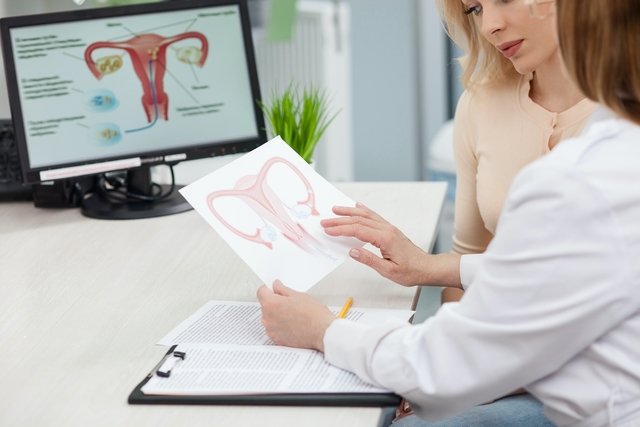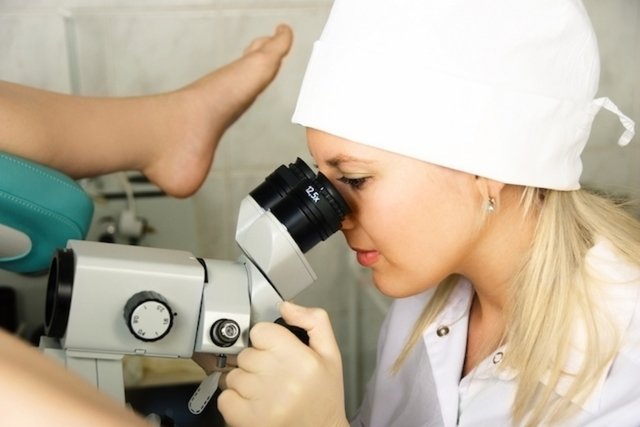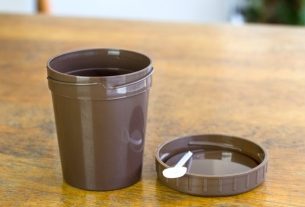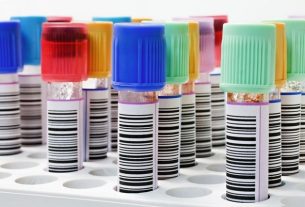Hysterosalpingography is an exam that allows you to visualize the intrauterine cavity and the permeability of the fallopian tubes, also called uterine tubes, and is useful for identifying any type of change, such as adhesions, malformations, fibroids or obstructed tubes.
Generally, this exam is recommended by the gynecologist to investigate the causes of female infertility, after a year of trying to get pregnant, but it can also be done after tubal ligation to evaluate the success of the surgery.
Hysterosalpingography can be performed free of charge by the SUS, as long as it has a medical indication, but it is also carried out in private examination clinics, and the results must be analyzed by the gynecologist, who may also indicate the performance of other complementary examinations, such as videolaparoscopy, for example. Check out other tests that may be recommended by the gynecologist.

What is it for
Hysterosalpingography is used to evaluate the causes of female infertility and investigate changes in the female reproductive system, such as:
- Congenital malformations of the uterine tubes;
- Blockage of the fallopian tubes due to scarring or infection;
- Fibroids;
- Endometrial polyps;
- Endometriosis in the pelvis;
- Adhesions in the uterus;
- Tumors of the reproductive system.
In addition, hysterosalpingography may also be indicated after tubal ligation surgery to check the closure of the tubes, or also to evaluate the possibility of reversing the tubal ligation surgery. Hysterosalpingography may also be indicated to investigate the cause of repeated miscarriages due to uterine problems.
How hysterosalpingography is performed
Hysterosalpingography is a simple exam that is performed following the following step-by-step procedure:
- Advise the woman to be in a gynecological position;
- Inserting a small instrument into the vaginacalled a vaginal speculum, the same one used in routine gynecological examinations, to allow visualization of the cervix;
- Dilation of the cervix to allow placement of the catheter;
- Introduction of a thin, flexible catheter, through the opening of the cervix. This catheter is externally connected to a syringe with contrast medium;
- Iodine contrast injection directly through the catheter, which allows filling the cervix and fallopian tubes;
- Carrying out several x-rays with the aim of observing the route that the contrast takes inside the uterus and towards the uterine tubes.
The images obtained by X-ray allow the female reproductive organs to be observed in detail and in real time, making it possible to identify the possible causes of a woman’s infertility or identify any other type of change.
Hysterosalpingography is a simple exam that is usually performed in the gynecologist’s office. This exam does not hurt, but it is possible that the woman will feel a little discomfort during it, and the doctor may recommend the use of some analgesic or anti-inflammatory medication to use before and after the exam.
Hysterosalpingography with sedation
Hysterosalpingography is a simple test that does not require sedation. However, if a woman presents with vaginismus, which is the involuntary contraction of the pelvic floor muscles, which does not allow vaginal penetration, the doctor may perform sedation to reduce discomfort during the examination. Understand better what vaginismus is.
How to prepare for the exam
To perform hysterosalpingography, certain precautions must be taken, such as:
- Take the laxative prescribed by your doctor the night before the exam, to prevent feces or gases from obstructing the visualization of gynecological structures;
- Take the painkiller or anti-inflammatorysuch as paracetamol or ibuprofen, prescribed by the doctor, about 30 to 60 minutes before the exam, as the exam can be a little uncomfortable;
- Take the antibiotic to help prevent infections, if your doctor has recommended it;
- Not menstruating or have unexplained vaginal bleeding;
- Inform the gynecologist if there is a possibility that you may be pregnant;
- Tell your doctor if you are allergic to iodineor seafood, as the contrast used contains radioactive iodine;
- Inform the doctor if there is a pelvic inflammatory disease or an active gynecological infection or inflammation, such as chlamydia or gonorrhea, that has not been treated;
- Inform if you have health problemssuch as hyperthyroidism or Graves’ disease;
- Bring a list of all medicationsvitamins and nutritional supplements that are taken frequently;
- Remove any metallic objects before the examso as not to interfere with the X-ray, such as earrings, necklaces, watches or bracelets;
- Empty your bladder immediately before the exam.
Normally, the exam is performed during the follicular phase, which is before ovulation, about 1 week after the beginning of the menstrual cycle, as the endometrial lining is thinner, which increases the permeability of the contrast, in addition to ensuring that the The woman is not pregnant, as this test is contraindicated in cases of pregnancy.
It is also recommended that the woman bring the results of tests she has recently undergone, such as a transvaginal ultrasound, magnetic resonance imaging or hysteroscopy, or even a previous hysterosalpingography, if this test has already been carried out previously.
How to understand the result
The result of hysterosalpingography must be interpreted by the gynecologist:
Based on the result, the gynecologist can plan the type of treatment or assisted reproduction procedure that can be applied in the case of infertility.
Care after hysterosalpingography
Hysterosalpingography is a quick exam and lasts around 10 to 30 minutes, and after the exam, cramps similar to those during a menstrual period may occur, and the doctor may recommend the use of analgesic or anti-inflammatory medications to alleviate this discomfort.
After the examination, minor bleeding or vaginal discharge may also occur. In this case, intimate contact should be avoided for the time recommended by the doctor and do not use tampons or vaginal douches.
When it should not be done
Hysterosalpingography should not be done during pregnancy, as the contrast injected into the uterus and the X-ray can cause malformations in the fetus.
Furthermore, in women with thyroid diseases, such as Graves’ disease or hyperthyroidism, to perform hysterosalpingography, the gynecologist must evaluate the benefit of the examination, as iodine contrast is used, which can cause an increase in the synthesis of thyroid hormones.
Possible complications of the exam
Hysterosalpingography is a safe test, generally not causing complications during the procedure. However, in some, excessive vaginal bleeding, foul-smelling discharge, severe cramping, fever, chills or vomiting may occur.
In these cases, it is important to contact your gynecologist immediately or go to the nearest emergency room, as it may be indicative of a gynecological or pelvic infection.
Furthermore, during the examination, allergy to iodinated contrast or anaphylactic shock may occur. In this case, medical care is immediate, as the examination is carried out in a hospital environment or specialized clinics, with equipment for medical emergencies.

Sign up for our newsletter and stay up to date with exclusive news
that can transform your routine!
Warning: Undefined array key "title" in /home/storelat/public_html/wp-content/plugins/link-whisper-premium/templates/frontend/related-posts.php on line 12
Warning: Undefined array key "title_tag" in /home/storelat/public_html/wp-content/plugins/link-whisper-premium/templates/frontend/related-posts.php on line 13




